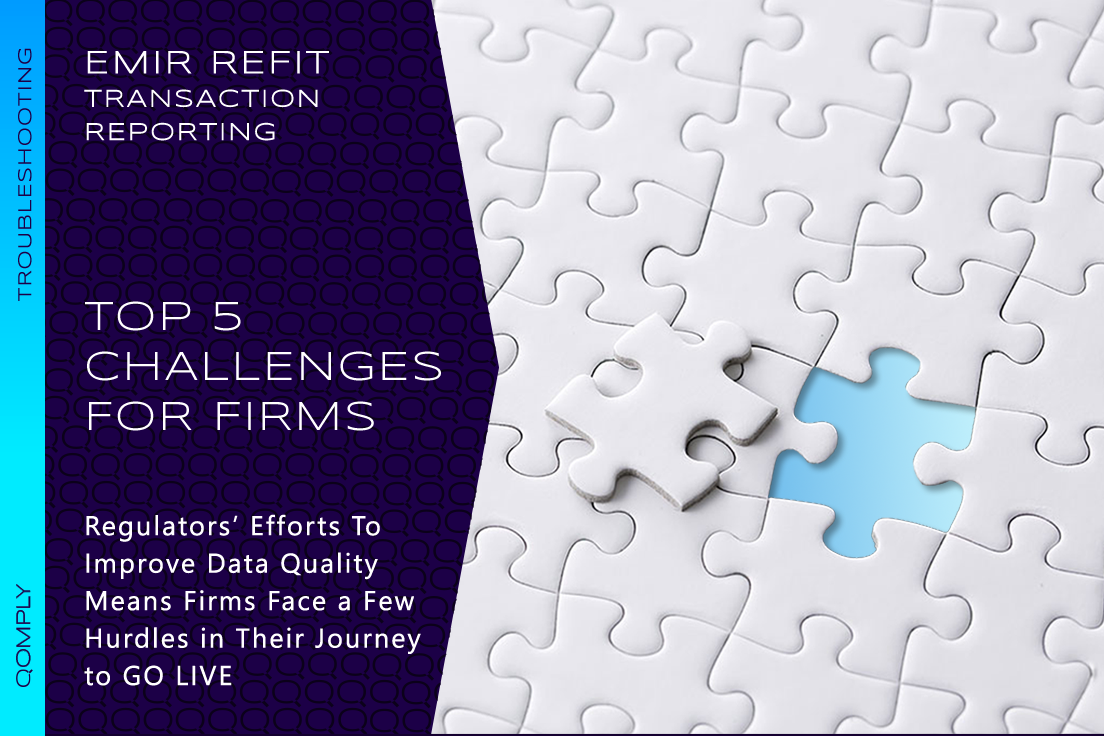EMIR Refit
Top 5 Challenges for Regulated Firms
 Author: Sophia Fulugunya
Author: Sophia Fulugunya
Director of Transaction Reporting
First published 2 May 2023, refreshed 29 January 2024
The European Market Infrastructure Regulation (EMIR) has undergone significant changes with the introduction of EMIR Refit, presenting implications for regulated firms. Here are the top five immediate challenges faced by firms:
1) An Extensive Number of New Fields
The data fields in EMIR Refit are set to undergo substantial changes, incorporating 89 new fields, withdrawing 15, and updating existing ones. The influx of additional fields, coupled with the necessity to create XML submissions, will result in the submission of sizable files to regulators.
2) Increased Trade Reconciliation Fields and Published Tolerance Levels
The number of reconcilable fields has expanded and is being introduced incrementally to ease the burden on firms. By 2026, two years post EMIR Refit launch, there will be 149 fields for reconciliation, a significant increase from the current 56 in EMIR.
Fortunately, EMIR Refit guidelines clearly outline reconcilable fields, tolerance levels, and start dates for reconciliation. The regulations aim to enhance matching and pairing rates by reducing ambiguity in field definitions, with increased precision rates for numeric values and rounding guidance.
3) UTI
EMIR Refit aligns with international standards and global harmonisation in reporting. The regulations establish Unique Trade Identifier (UTI) generation logic and timelines for sharing the UTI. The responsibility for generating the UTI depends on transaction type and counterparties. Understanding UTI generation, dissemination, and increased counterparty communication is crucial, particularly for transactions spanning jurisdictions and time zones.
4) CSV to XML
The shift to XML-formatted files aligns with global harmonisation objectives and data quality improvement. While XML files may be larger and take longer to generate compared to CSV files, the enhanced data quality justifies this technological transition.
5) Staggered GO LIVE dates between ESMA and the FCA
Firms obligated under both ESMA and FCA must maintain two different data standards for four months. They may also need to report the same trade to two different versions of the EMIR regime. Regulators emphasise that reporting EMIR Refit cannot commence until the specified Go Live dates: 29 April 2024 (ESMA) and 30 September 2024 (FCA). This introduces complexity, and firms must proactively plan to address this challenge.
In navigating these challenges, firms should prioritize understanding the nuances of EMIR Refit, implementing robust systems and processes, and fostering effective communication with regulators to ensure compliance during this transitional period.
About Qomply
Qomply empowers financial firms of all sizes to meet their regulatory transaction reporting requirements with best-in-class cloud-based technology solutions that are easy to use at affordable price points.
Our award-winning ReportAssure platform, powered by our proprietary assurance engine, delivers one of the most comprehensive arsenals of accuracy checks in the industry, ensuring our customers’ transaction reports are as complete and accurate as possible.
By offering affordable, modular subscriptions, we enable financial firms of all sizes to benefit from high-quality, regulatory reporting technology, choosing from a menu to suit all appetites.
For more information, please contact Qomply, on +44 (0) 20 8242 4789 or info@qomply.co.uk
Follow Qomply on social media on Twitter (https://twitter.com/QomplyRegTools) and LinkedIn (https://www.linkedin.com/company/qomply/)


